Monday marks China's second Farmers' Harvest Festival. Established in 2018 by the State Council, the annual festival is to celebrate the farming harvest across the former agricultural country but now the world's second-largest economy. The first-ever state-level farmers' festival also falls on the autumnal equinox, one of the 24 solar terms of the Chinese lunar calendar.
China has witnessed rapid progress in industrialization and urbanization since the country began to adopt the reform and opening-up policy 40 years ago. With only seven percent of the world's arable land, China manages to feed 20 percent of the global population.
Farmers celebrate the festival with activities ranging from skill contests and products exhibitions to parties and carnivals.
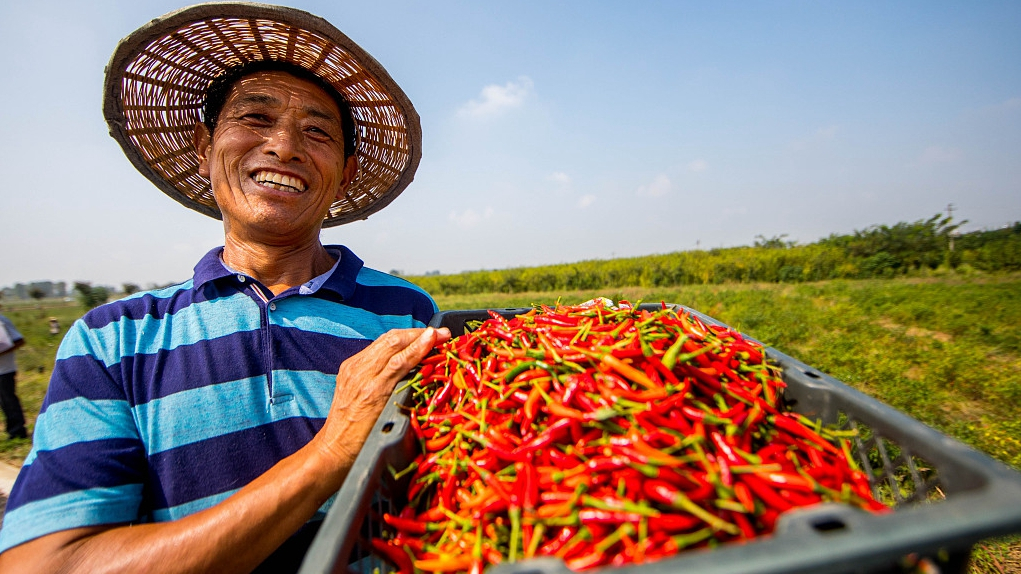
A farmer picks peppers in Anhui Province, east China. /VCG Photo
A farmer picks peppers in Anhui Province, east China. /VCG Photo
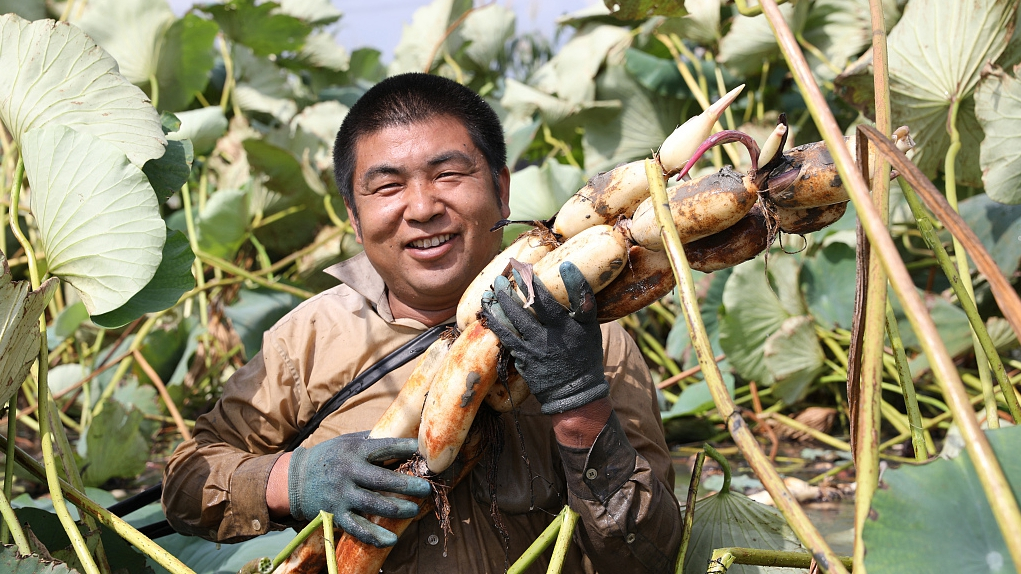
A farmer picks lotus roots in Jiangsu Province, east China. /VCG Photo
A farmer picks lotus roots in Jiangsu Province, east China. /VCG Photo
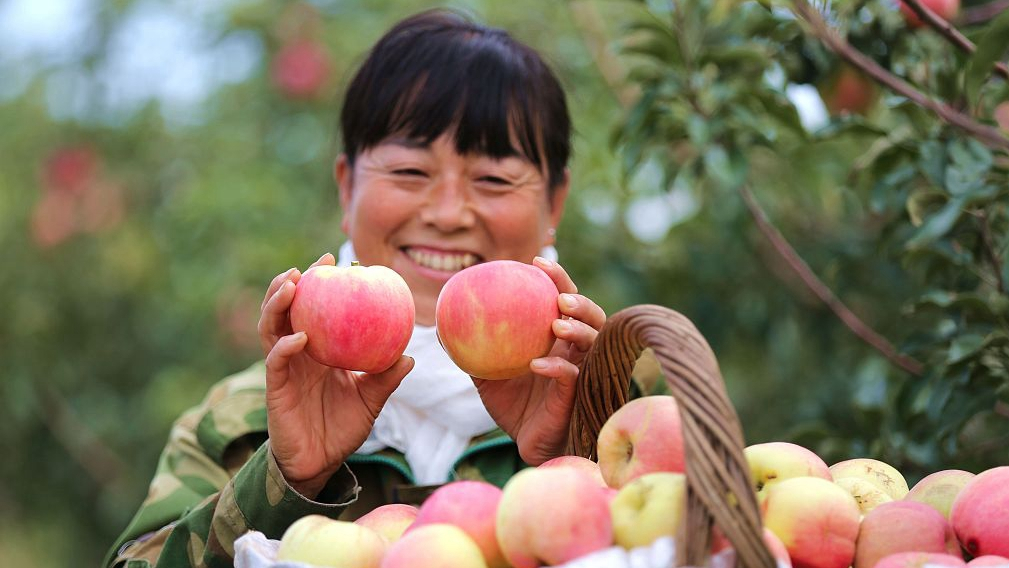
A farmer is happy with freshly harvested apples in Hebei Province, north China. /VCG Photo
A farmer is happy with freshly harvested apples in Hebei Province, north China. /VCG Photo
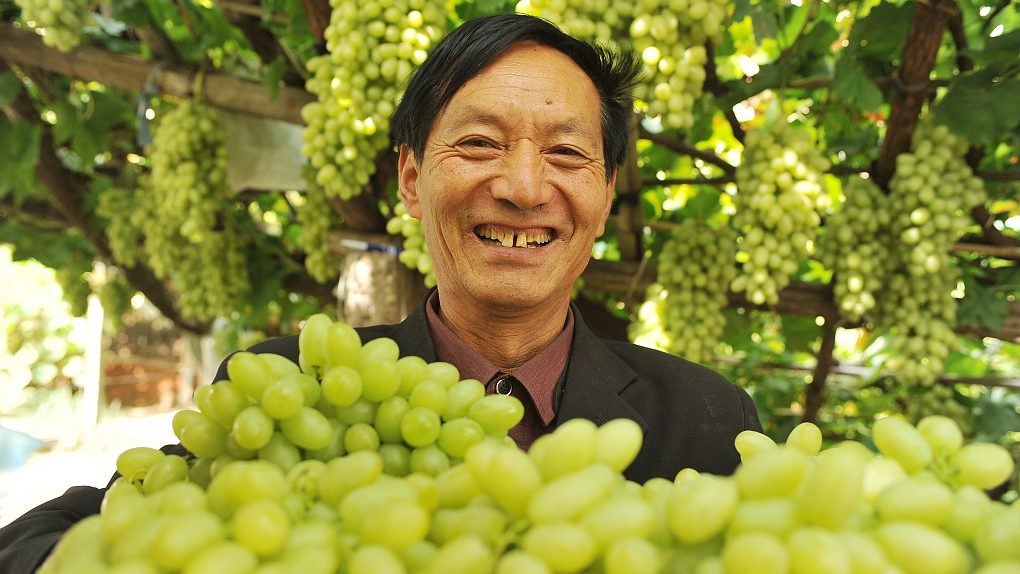
A farmer in Hebei Province shows grapes he has just harvested in Hebei Province, north China. /VCG Photo
A farmer in Hebei Province shows grapes he has just harvested in Hebei Province, north China. /VCG Photo
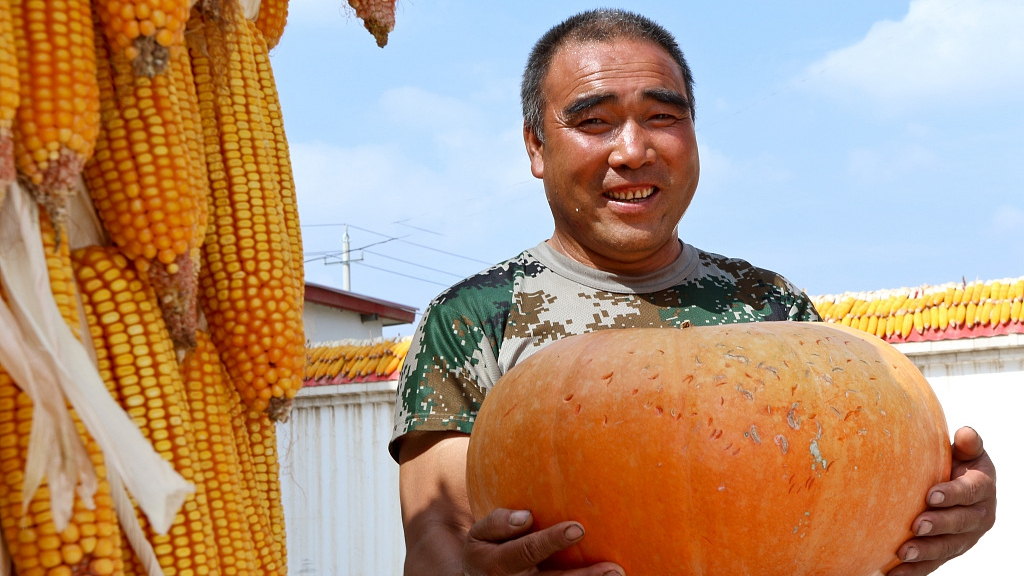
A farmer shows a pumpkin during harvest in Gansu Province, northwest China. /VCG Photo
A farmer shows a pumpkin during harvest in Gansu Province, northwest China. /VCG Photo
The origin of the harvest festival
The history of celebrating harvest in China dates back thousands of years. In ancient times, when productivity was low, people believed the harvest was something blessed by various gods.
Therefore, they would make sacrifices to the gods – especially to the God of Land – after the harvest. During the Western Zhou Dynasty (1046 – 771 BC), only the emperor and the feudal princes had the right to conduct such sacrificial activities.
However, as society developed, the harvest celebration gradually lost its political and religious tint. By the Tang Dynasty (618– 907), the festival had undergone a complete transformation to become a festival for ordinary people.

People in southwest China's Tibet Autonomous Region put on a show to celebrate China's Farmers' Harvest Festival, September 2019. /VCG Photo
People in southwest China's Tibet Autonomous Region put on a show to celebrate China's Farmers' Harvest Festival, September 2019. /VCG Photo
Celebrations for the harvest have always been closely associated with singing and dancing. It's also a time for holding hearty banquets where people enjoy wines and all kinds of food, including harvest grains, seasonal fruits, meat and snacks.
In ancient times, people stopped working and spent the whole day participating in festive activities on the important day.
The tradition of celebrating harvest is especially well preserved in many regions inhabited by ethnic groups in China.
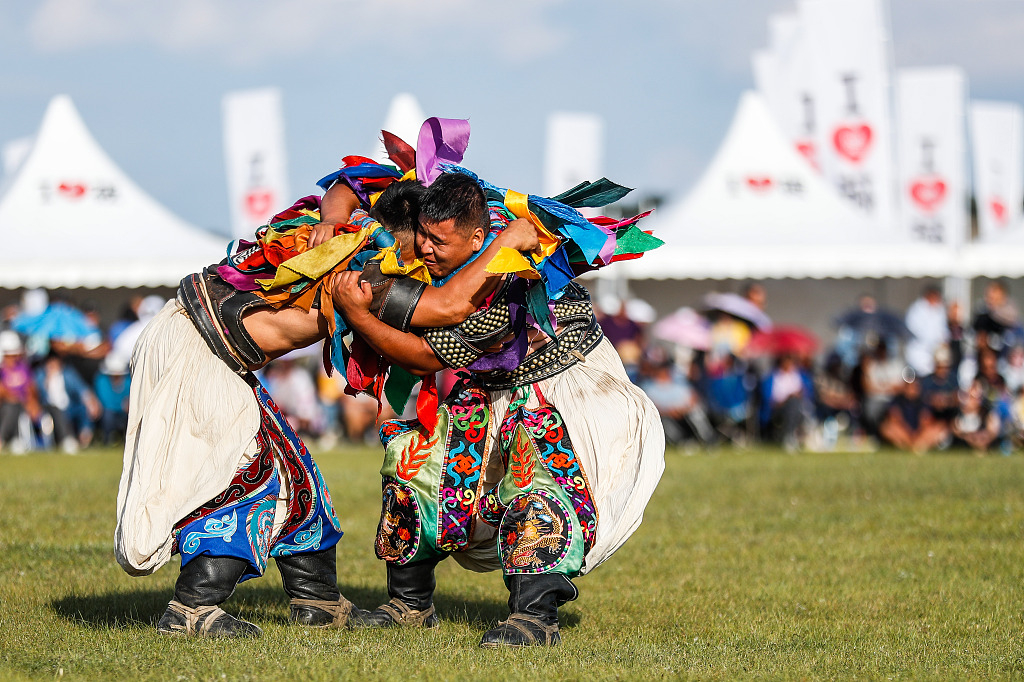
Wrestlers compete against each other during the annual "Naadam" festival held in north China's Inner Mongolia Autonomous Region. /VCG Photo
Wrestlers compete against each other during the annual "Naadam" festival held in north China's Inner Mongolia Autonomous Region. /VCG Photo
For instance, people in southwest China's Tibet Autonomous Region hold the "Ongkor Festival" each August of Tibetan Calendar to celebrate the harvest. The celebrations include horse racing, shooting, dancing and singing, Tibetan traditional opera, stone lifting and wrestling. The ethnic Mongolians in north China's Inner Mongolia Autonomous Region have their festival "Naadam" in July or August when they showcase the region's traditional sports of Mongolian wrestling, horse racing and archery.
(Cover photo designed by Gao Hongmei)